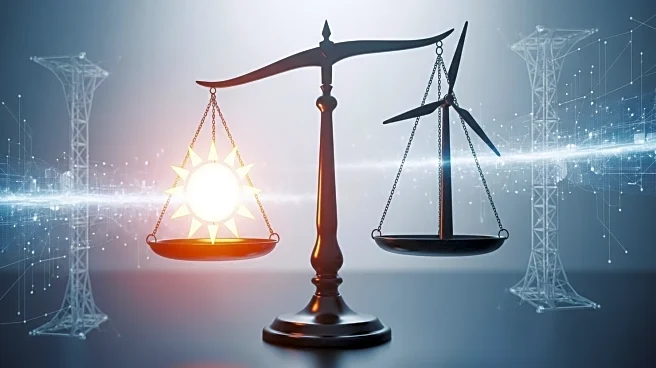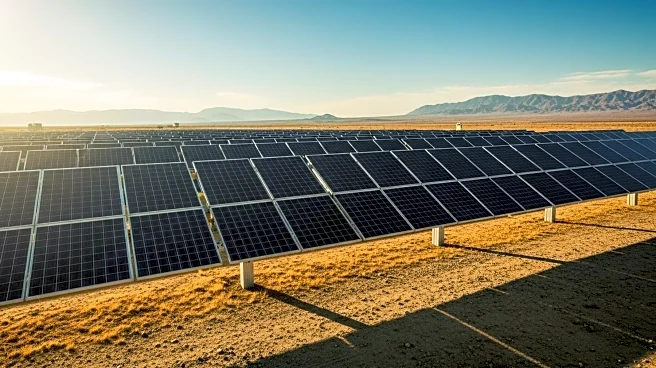What's Happening?
The U.S. energy sector is experiencing a significant shift towards renewable energy, with solar and wind power becoming increasingly cost-competitive. According to the U.S. Energy Information Administration (EIA), over 1,100 new wind and solar facilities are planned by 2030, and these sources are expected to account for 80% of new electric generating capacity through 2035. However, Jonathan A. Lesser, PhD, president of Continental Economics, argues that the current metrics used to evaluate these energy sources are misleading. The EIA's data treats a megawatt of solar or wind power as equivalent to a megawatt from traditional sources like natural gas or coal, which does not account for the intermittent nature of renewables. This discrepancy could lead to inadequate planning for future electricity needs, especially as demand grows from data centers and AI applications.
Why It's Important?
The shift towards renewable energy is crucial for reducing carbon emissions and combating climate change. However, the current evaluation metrics may not accurately reflect the true costs and reliability of solar and wind power. This could result in overestimating the capacity of renewables to meet electricity demand, potentially leading to energy shortfalls. As the U.S. continues to invest in renewable infrastructure, it is essential to develop more accurate models that consider the intermittency and additional costs associated with these energy sources. Policymakers and industry stakeholders must address these challenges to ensure a reliable and sustainable energy future.
What's Next?
To address these challenges, there is a need for reform in how energy data is reported and analyzed. This includes developing comprehensive forecasts that incorporate the costs of backup power and infrastructure needed to support renewable energy's variability. Additionally, improving forecasting models to account for extreme weather conditions and aging infrastructure will be crucial. As the U.S. accelerates its renewable energy buildout, stakeholders must prioritize accurate metrics and planning to avoid compromising grid reliability.
Beyond the Headlines
The debate over renewable energy metrics highlights broader issues in energy policy and planning. As the energy landscape evolves, there is a growing need for transparency and accuracy in data reporting to inform policy decisions. This situation also underscores the importance of investing in technological advancements and infrastructure to support the transition to a renewable energy future. The outcome of these efforts will have significant implications for the U.S. economy, energy security, and environmental sustainability.











